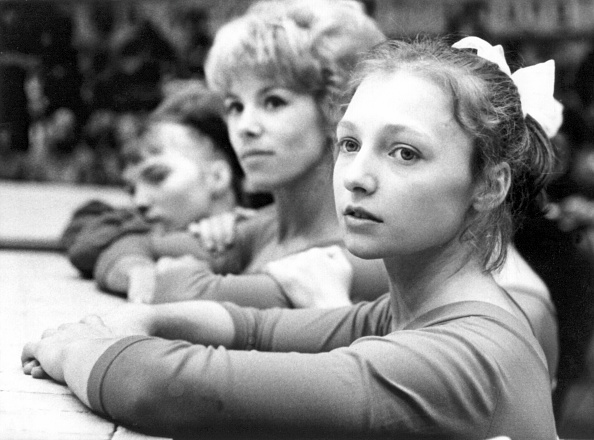The World Championships are a long slog for judges. The 1966 World Championships in Dortmund were no exception, and, at the time, many believed that the length of the competition impacted the judging.

Here’s what Marilyn Savage, the head coach of the Canadian women’s team, said:
The erratic judging occurred after the long 2-hour delay concerning Doris Fuchs Brause’s uneven bars routine. The girls were very disappointed at the final team standings as they worked long and hard only to see their efforts partially evaporate in the late evening. The judges cannot be blamed entirely, for it seems almost inhuman to require them to report for duty at 7 a.m., begin judging at 7:30 a.m. and finish at 10:30 p.m. with only 1 hour off for lunch. On the day of the optionals, because of the delay, they finished approximately at 12 :30 a.m.—a total of 17 hours.
Modern Gymnast, Jan. 1967
Can you imagine judging for 17 hours? 😵💫
The Swiss newspaper L’Impartial gave a similar account:
Will the next world championships, in Belgrade, in 1970, see fewer participants competing against one another for the titles at stake? This is the question posed by the experts meeting in Dortmund about the problem of judging routines, which, like in figure skating, is a subject that provokes passionate and critical discussions.
The discussions most frequently relate to, on the one hand, the fatigue suffered by the judges, who cannot, humanly, maintain their concentration for 15 hours each day, as is currently required of them. On the other hand, the discussions focus on “the breakdown” of teams of unequal values into different groupings and finally, to the “love rating” from which, as in skating, the stars undoubtedly benefit.
L’Impartial, Sept. 23, 1966:
Gym nerds loved talking about judging problems back in the 1960s. At the Dortmund World Championships, those problems included:
😔 Name recognition bonus.
😔 Leotard/team/country bias
😔 Judging fatigue after spending 15+ hours on the job
Note
I believe that the phrase “«l’éclatement» des formations de valeurs inégales en groupes différents” is intentionally ambiguous. The “unequal values” could refer to the teams’ gymnastics performances or to their social and political values.
What did Arthur Gander and the FIG think?
They were aware of the need for improvement…
Mr. Arthur Gander (Switzerland) agreed that improvements should be made to the system that is currently being used. He noted that he was considering a proposal that would limit the next world championships to only the top ten or eleven teams. These would be designated by qualifying tournaments. “This would make the world championships more concentrated, and I believe that the competitors, like the judges and the public, could only win,” added Mr. Gander.
L’Impartial, Sept. 23, 1966.
In other words, the FIG was thinking about holding qualifying meets before the 1970 World Championships.
In fact, that’s exactly what the FIG tried to do between 1969 and 1970. But South African politics got in the way of the qualifications process.
You can read more on that subject here.
One last thing: don’t skip over the mention of the public in Gander’s remarks. While the FIG was decades away from signing TV contracts, the organization was already trying to grow the sport’s audience in the 1960s, and it was making decisions that would benefit spectators — in addition to the judges and athletes.
The topics of spectators and spectacle would become recurring themes for the FIG.
Part of the original article in French from L’Impartial, Sept. 23, 1966:
Les prochains championnats du monde, à Belgrade, en 1970, verront-ils moins de participants s’affronter poulies titres en jeu? C’est la question que se posent les experts réunis à Dortmund à propos du problème de la cotation des exercices qui, comme en patinage artistique, est un sujet provoquant discussions passionnées et critiques.
Celles formulées, le plus fréquemment se rapportent d’une part à la fatigue subie par les Juges, qui ne peuvent, humainement, maintenir leur concentration d’esprit 15 heures chaque jour comme on l’exige d’eux actuellement, d’autre part «l’éclatement» des formations de valeurs inégales en groupes différents et enfin, à la «cote d’amour» dont, comme en patinage, bénéficient incontestablement les vedettes.
L’avis de M, Gander
M. Arthur Gander (Suisse) a reconnu qu’il conviendrait d’apporter des améliorations.. au système actuellement en vigueur et qu’il envisageait de proposer de ne retenir pour les prochains championnats du monde que les dix ou onze meilleures formations. Celles-ci seraient désignées par des tournois de qualification. «La confrontation mondiale serait ainsi plus concentrée et je crois que les concurrents, comme lés juges et le public, ne pourraient qu’y gagner» a ajouté M. Gander.